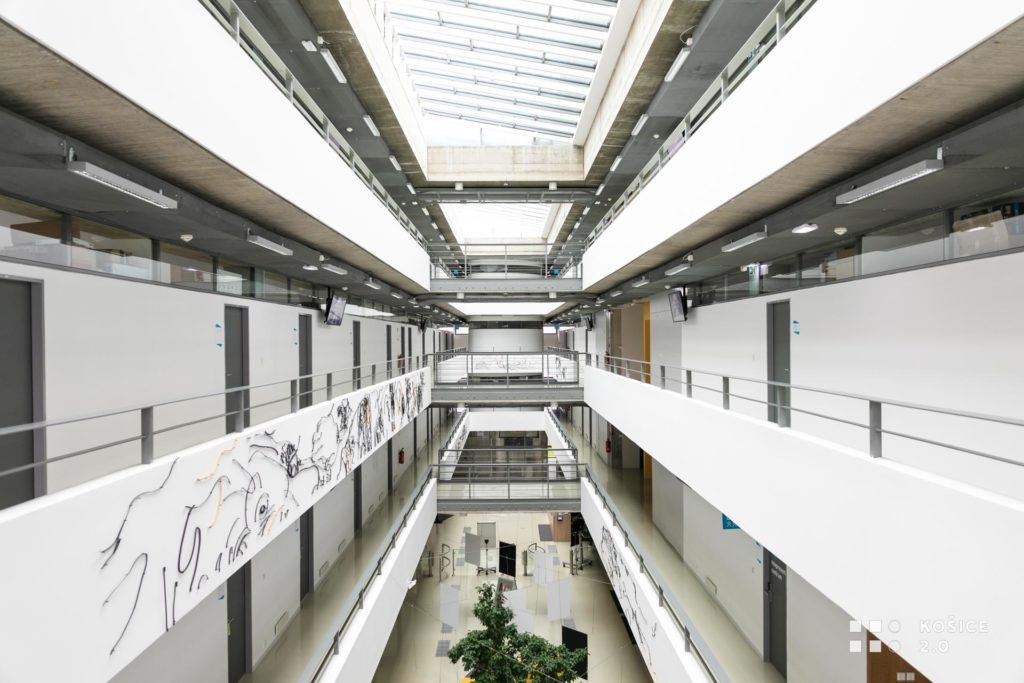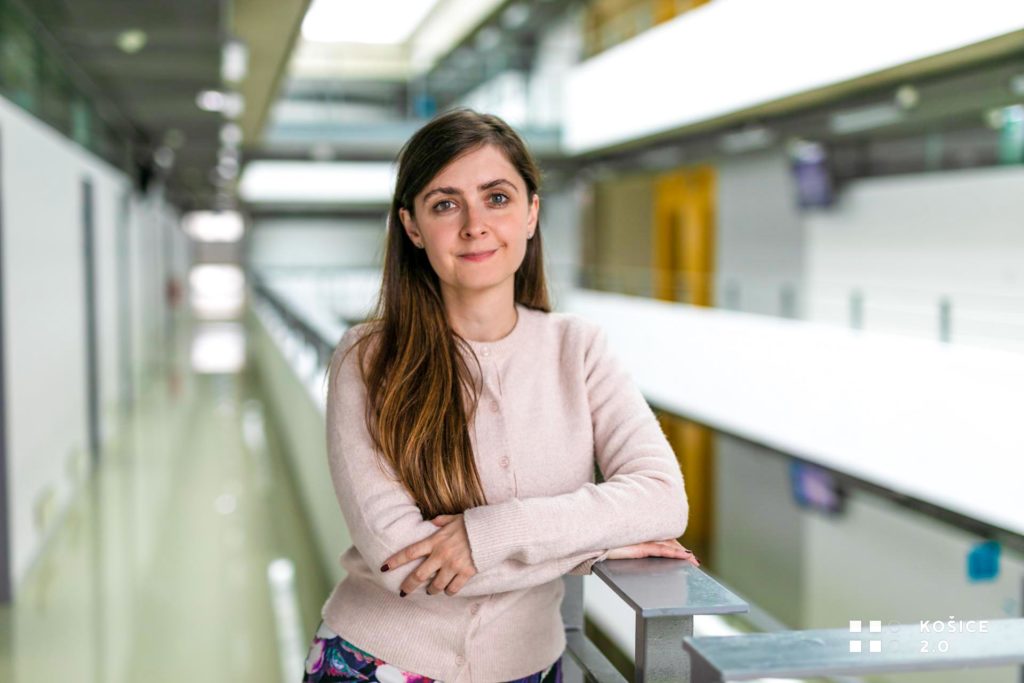Accessing the labor market for people from Ukraine can enrich the IT sector in Košice
The main motive of the upcoming hackathon from the City Hacks series is to help employ people fleeing Ukraine. We talked to Miriama Hučková, Executive Director of Košice IT Valley, about why this topic is still relevant from the point of view of the Košice IT sphere.
Miriama has been in her position since 2020, but she gained her first contact with the topic of clusters at the Ministry of Economy of the Slovak Republic. She participated in preparing strategic documents for Smart City and Smart Industry development. “My job was more about creating conditions that could accelerate change. In Košice IT Valley, we are really becoming that change. We see the impact of our activities in the region, and that is what fulfills me the most. For example, we can say how many women have found a better job in the IT field after completing our courses,” says Miriama.

The establishment of the Košice IT Valley in 2007 was very closely related to the arrival of the first IT companies. They were facing a serious problem. “Graduates of the local universities did not meet the changing labor market requirements at that time. The primary goal of the cluster was to enable IT companies to communicate their needs,” Miriama explains. In the first years of its existence, the cluster cooperated intensively to create curricula and educational programs, resulting in a close connection between companies and schools in the region. That persists, but today’s role for IT Valley is to build a functioning ecosystem that will help develop the city towards digitization and innovation. “We see the future of Košice in the development of IT companies that can bring their own products and work with higher added value.”
Interest in social innovations is also growing in the Košice IT community
Miriama says that the interest in the IT-sphere in social innovation is growing every year. The proof is the number of successful projects in which the business cooperates with the region, the local government, and the non-profit sector. “A nice example is the Alone in Museum (Sám v múzeu) application, which came from a hackathon at the Technical University in Košice. The solution provides visually impaired people with the experience of visiting Rodošto in Košice. In 2018, it even won the Via Bona award.” Since our interview took place on Earth Day, it was impossible not to mention the Way2Eco application from the workshop of Košice developers and UX designers. It can measure carbon footprint to motivate users to reduce CO2 production in transport. “There are already many examples of successful cooperation between the city and the IT sphere for the well-being of the inhabitants, even though the potential is greater,” adds Miriama.

Cooperation is a success when each player contributes a part that is their own. The main essence is mutual trust.
Miriama Hučková, Košice IT Valley

IT sector and the conflict in Ukraine
The situation in Ukraine has also shaken the IT sector in Košice. Many companies have offices in the eastern part of the country. “Since the outbreak of the conflict, several companies have lost a large number of employees, which of course has affected their performance,” says Miriama. On the other hand, there has also been an enormous degree of solidarity with the people affected by the conflict. “In the IT Valley, we felt the need to help in our own way – to provide the expertise available to our members and link them to the demands of the non-profit sector. This is how the website of the city of Košice to help Ukraine was created. Vacuumlabs company, in turn, helped the city of Košice with an application for the registration of the volunteers.”
In addition to material assistance, the IT sector can provide people fleeing Ukraine with jobs. “In September, about four hundred jobs were opened in Košice, while IT companies’ real needs are even higher. In addition, people of different nationalities are a great enrichment for the IT sector,” says Miriama. “We can not only employ these people but also offer them training courses and education. But accommodation remains a problem,” she explains. She sees the opportunity in cooperation with the city and the non-profit sector. “I think that a hackathon can be a suitable tool, for example, to find a platform that maps housing needs and links them with free capacities in the city and its surroundings.”

In the IT sphere, the diversity of teams, both in terms of gender and nationality, is a key factor for success. Employing people from Ukraine can only enrich us.
Miriama Hučková, Košice IT Valley


The vision for Košice is to be open to an innovative approach
“A group of ten programmers mostly looks at the problem technologically. But when you put together people with different backgrounds and unique approaches to the problem, innovative solutions come in. This is exactly the meaning of hackathons and their advantage at the same time,” says Miriama and adds that the city of Košice could become the so-called “testbed” or test platform. “Now we have the opportunity to try new approaches and create opportunities for young, skilled people.”
Hackathon is also about competition, while the winning team is the one that comes up with the best solution in terms of programming and design and responds to a real problem at the same time. This determines its usability in practice. Therefore, data is becoming an integral part of hackathons. “Thanks to data, a person gets a very accurate picture of reality and can better understand the relationships between causes and consequences,” explains Miriama.
At the end of the interview, there is the question of why to come to the upcoming Hack for Help. “Here, you will see how the effort you make will really help someone. I also think that any experience that pulls us out of our comfort zone moves us personally forward and can lead to breakthrough solutions. Working in a mixed team, looking for innovative solutions to sensitive problems, and working in time stress is a great life experience everyone should have at least once,” Miriama replies.
The secret of a successful digital solution, according to Miriama
- Well built, diverse team
- Reflection on the real problem
- Security of the solution
- Persistence
- The ability to accept criticism and the desire to improve constantly


